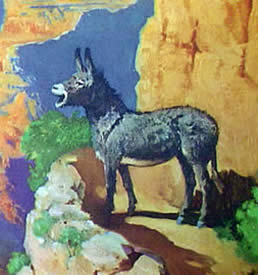Second in a series on Earth-Spirit Ways
By Sandra Cosentino, M.S.
Attention is a powerful skill used by mystics, modern and ancient, to expand awareness of energies and open to perceiving new insights. The practice of focused attention to subtleties can expand perceptual, direct knowing. Ancestral peoples had deep observational abilities of the cycles of nature and celestial realms, for example, that gave birth to astronomies and spiritual practices to work with these natural energies to enhance their lives. Confidence and inner knowing arise from paying attention.
"Attention is the cognitive process of selectively concentrating on one aspect of the environment while ignoring other things. Attention has also been referred to as the allocation of processing resources." (Wikipedia)
"Holding deeper attention is all it takes to illumine what is invisible." (Llyn Roberts)
 |
| Once I looked directly into a bear's eyes in the wild--that image of focused attention is forever burned into my psyche. |
Please see full article and Southwest images here:
http://www.crossingworlds.com/articles/attention.html































